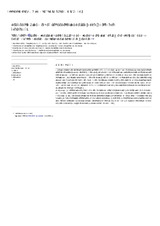Concentric Ring Method for generating pollen maps. Quercus as case study
Autor
Oteros, José
Valencia, Rosa María
Río, Sara del
Vega, Ana María
García-Mozo, H.
Galán, Carmen
Gutiérrez, Pablo
Mandrioli, Paolo
Fernández González, Delia
Editor
ElsevierFecha
2017Materia
Concentric Ring MethodQuercus
Geostatistics
Pollen index
Aerobiology
Map
METS:
Mostrar el registro METSPREMIS:
Mostrar el registro PREMISMetadatos
Mostrar el registro completo del ítemResumen
Mapping pollen concentrations is of great interest to study the health impact and ecological implications or for
forestry or agronomical purposes. A deep knowledge about factors affecting airborne pollen is essential for
predicting and understanding its dynamics. The present work sought to predict annual Quercus pollen over the
Castilla and León region (Central and Northern Spain). Also to understand the relationship between airborne pollen
and landscape. Records of Quercus and Quercus pyrenaica pollen types were collected at 13 monitoring sites
over a period of 8 years. They were analyzed together with land use data applying the Concentric Ring Method
(CRM), a technique that we developed to study the relationship between airborne particle concentrations and
emission sources in the region.
The maximum correlation between the Quercus pollen and forms of vegetation was determined by shrubland
and “dehesa” areas. For the specific Qi pyrenaica model (Q. pyrenaica pollen and Q. pyrenaica forest distribution),
the maximum influence of emission sources on airborne pollen was observed at 14 km from the pollen trap location
with some positive correlations up to a distance of 43 km. Apart from meteorological behavior, the local
features of the region can explain pollen dispersion patterns. The method that we develop here proved to be a
powerful tool for multi-source pollen mapping based on land use.

